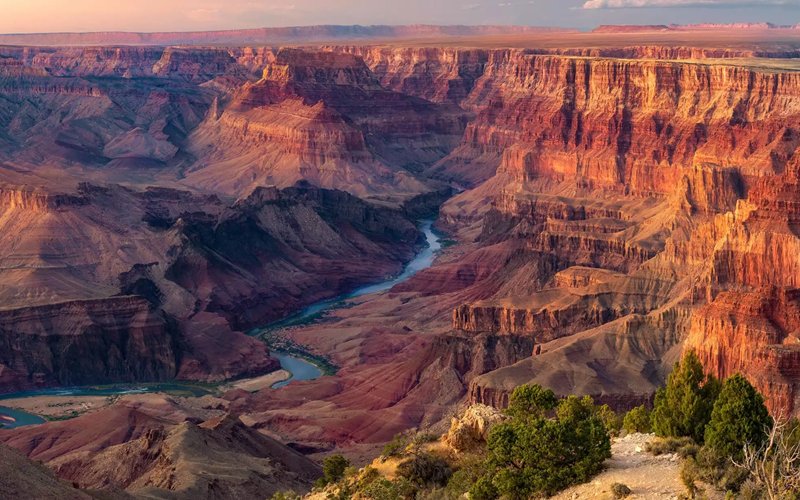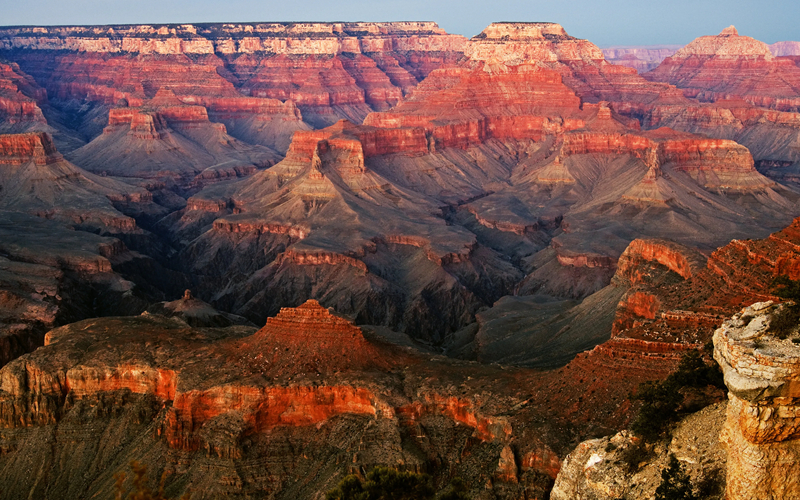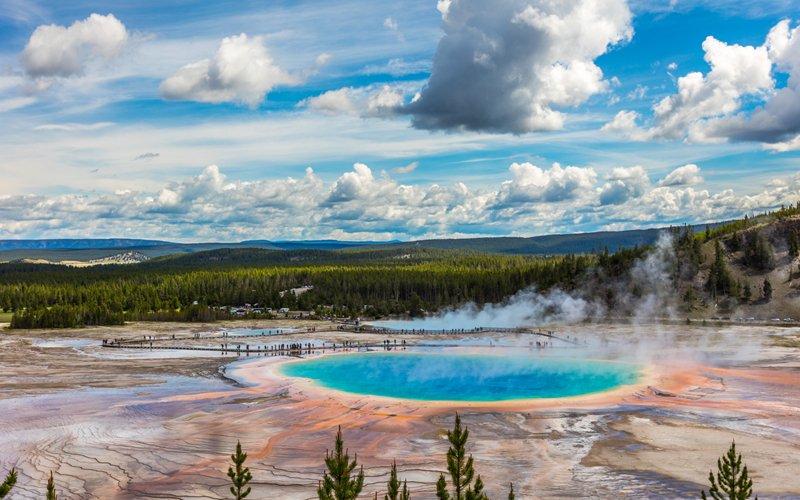Grand Canyon National Park is a national park located in the state of Arizona, USA. It is America’s 15th oldest national park. The Grand Canyon is a steep-sided canyon carved by the Colorado River through layer after layer of rock over a period of about 17 million years: one of Earth’s grandest and most magnificent features. The average width is 18 miles (29 km), with a length that varies from 277 miles (446 km) at its widest point to 155 miles (249 km) at its narrowest, and with a total area greater than 220,000 square miles (570,000 square kilometers).
Why you should visit Grand Canyon National Park
1. Historic
The Grand Canyon area has been inhabited since ancient times, first by the Hohokam and later by the Navajo, who still live in the canyon today. The earliest human artifacts found in the Park date back 8,000 years. Numerous tribes came to use the canyon, including over 300 Native American groups that made their homes in the canyon areas of Colorado and Arizona before European colonization. The rock walls of the canyon are etched with petroglyphs and pictographs depicting animals, people and religious symbols.

2. Beautiful vistas
The Grand Canyon is one of North America’s greatest scenic resources. The red walls create a gorgeous contrast with the blue-green vegetation at lower elevations. The views from the South Rim are some of the most magnificent in nature, and include several waterfalls.
3. Man-made attractions
The Grand Canyon has a number of natural wonders, but it also has some man-made ones. The most famous is probably the Skywalk, a horseshoe-shaped cantilever extending 70 feet (21 m) out from the canyon’s Eagle Point. The Skywalk includes a thick glass window that allows views straight down to the river far below at its rim. Another prominent attraction is El Tovar Hotel, built by the Santa Fe Railroad in 1905 on the South Rim.
4. Wildlife habitat
The Grand Canyon is home to a wide range of animals and plants, especially in the numerous riparian areas along its length. The most visible animal is the North American bison that grazes on the National Park Service-managed grasslands of the North Kaibab Plateau and still lives in small numbers within the canyon itself. Rare birds also inhabit the Grand Canyon, such as the great horned owl, peregrine falcon and California condor. The Kaibab squirrel is also found here living in treetop colonies numbering in the thousands.



